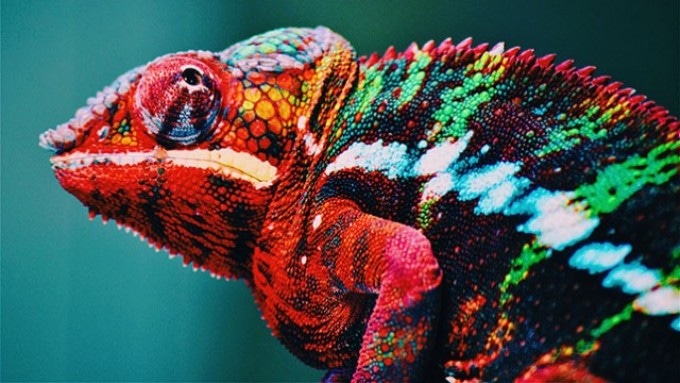Jun 21 2018
As a chameleon changes its color from green to turquoise to pink to orange, nature’s design principles are at work. Complex nano-mechanics are unobtrusively and effortlessly functioning to camouflage the lizard’s skin to look like its environment.
 Novel nanolaser leverages the same color-changing mechanism that a chameleon uses to camouflage its skin. (Image credit: Northwestern University)
Novel nanolaser leverages the same color-changing mechanism that a chameleon uses to camouflage its skin. (Image credit: Northwestern University)
A team of researchers from the Northwestern University have built a nature-inspired unique nanolaser that changes colors by applying the same mechanism as chameleons. The work could pave the way for developments in flexible optical displays in wearable photonic devices, televisions and smartphones, and ultra-sensitive sensors that measure strain.
“Chameleons can easily change their colors by controlling the spacing among the nanocrystals on their skin, which determines the color we observe,” said Teri W. Odom, Charles E. and Emma H. Morrison Professor of Chemistry in Northwestern’s Weinberg College of Arts and Sciences. “This coloring based on surface structure is chemically stable and robust.”
The study was reported online yesterday in the Nano Letters journal. Odom, who is the associate director of Northwestern’s International Institute of Nanotechnology, and George C. Schatz, Charles E. and Emma H. Morrison Professor of Chemistry in Weinberg, worked as the paper’s co-corresponding authors.
Just like how a chameleon exploits the spacing of nanocrystals on its skin, the researcher’s laser controls the periodic arrays of metal nanoparticles on a stretchable, polymer matrix. When the matrix stretches to pull the nanoparticles farther apart or contracts to force them together, the wavelength discharged from the laser alters wavelength, which also alters its color.
“Hence, by stretching and releasing the elastomer substrate, we could select the emission color at will,” Odom said.
The resulting laser is tunable, strong, reversible, and possesses a high sensitivity to strain. These properties are crucial for applications in on-chip photonic circuits, responsive optical displays, and multiplexed optical communication.
The research was aided by the National Science Foundation (award number DMR-1608258) and the Vannevar Bush Faculty Fellowship from the U.S. Department of Defense (award number N00014-17-1-3023). Danqing Wang, a graduate student in Odom’s laboratory, worked as the paper’s first author.